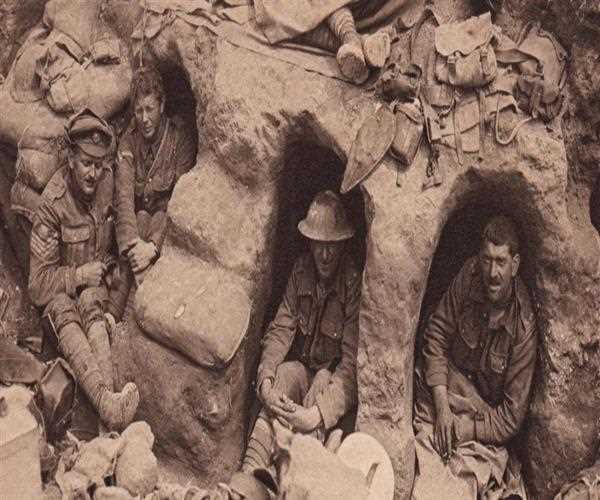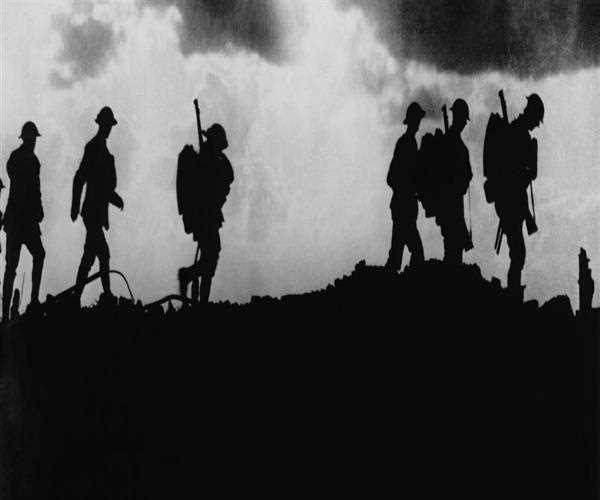
06-Jul-2023 , Updated on 7/6/2023 5:37:55 AM
Introduction to the World War I and its Aftermath
Highlights
- World War I, also known as the Great War, was a global conflict that took place from 1914 to 1918.
- The war began with the assassination of Archduke Franz Ferdinand of Austria in June 1914, which led to a series of diplomatic crises and alliances between different countries.
- The main factions involved in the war were the Allies (including France, Russia, and the United Kingdom) and the Central Powers (including Germany, Austria-Hungary, and the Ottoman Empire).
- The war was fought primarily in Europe but also spread to other parts of the world, including Africa, the Middle East, and Asia.
- The war was characterized by trench warfare, new weapons technology (such as machine guns, tanks, and chemical weapons), and high casualties.
- In 1917, the United States entered the war on the side of the Allies, tipping the balance in their favor.
- The war ended with the signing of the Armistice of Compiegne on November 11, 1918, effectively bringing an end to the fighting.
World War I, also known as the Great War, was a global conflict that took place from 1914 to 1918. It was one of the deadliest and most significant conflicts in history, marking a turning point in the geopolitical landscape and having a profound impact on the world.
- The aftermath of World War I brought about significant changes politically, socially, and economically, reshaping nations and setting the stage for future conflicts.
In this view, we will explore the causes, key events, and consequences of World War I, as well as its lasting effects on the world.

Causes of World War I
World War I was a culmination of various factors that led to the outbreak of hostilities. The underlying causes can be traced back to a complex web of political alliances, imperial rivalries, nationalism, and militarism. The assassination of Archduke Franz Ferdinand of Austria-Hungary by a Serbian nationalist in June 1914 served as the immediate trigger for the war. However, it was the underlying tensions between the major powers that turned this isolated incident into a full-scale global conflict.
Key Events and Major Players
The war involved two major alliances- the Allies, composed of France, Russia, and Britain, later joined by the United States and other countries, and the Central Powers, consisting of Germany, Austria-Hungary, the Ottoman Empire, and Bulgaria. The conflict was fought on multiple fronts, including the Western Front in France and Belgium, the Eastern Front between Germany and Russia, and the Middle Eastern and Balkan theaters.
Key events of the war included the Battle of the Somme, the Battle of Verdun, the Gallipoli Campaign, and the Russian Revolution. These events saw unprecedented levels of casualties and destruction, with millions of soldiers and civilians losing their lives. Technological advancements, such as the use of machine guns, tanks, and chemical weapons, further escalated the scale and intensity of the conflict.
Consequences of World War I
The aftermath of World War I had far-reaching consequences that reshaped the global order. The Treaty of Versailles, signed in 1919, imposed harsh conditions on Germany and its allies, holding them responsible for the war and demanding reparations. This punitive treaty, along with the redrawn boundaries and the collapse of empires, set the stage for future conflicts and tensions.
The war also had a profound impact on society. The unprecedented scale of casualties and destruction left a scar on the collective memory of nations. It shattered the optimism and idealism of the pre-war era, giving rise to a sense of disillusionment and a lost generation. The horrors of the war inspired artistic movements such as Dadaism and surrealism, which sought to express the absurdity and chaos of the conflict.
Political Changes
World War I led to significant political changes across the globe. The Russian Revolution in 1917 resulted in the establishment of the world's first communist state, the Soviet Union, which challenged the existing order and ideologies. In Europe, the war brought an end to several empires, including the Austro-Hungarian Empire, the Ottoman Empire, and the German Empire. New nations emerged from the ruins, redrawing the map of Europe and the Middle East.
In the aftermath of the war, the League of Nations was established as an international organization aimed at promoting peace and preventing future conflicts. While it had noble intentions, the League of Nations proved ineffective in maintaining global stability, ultimately giving way to the formation of the United Nations after World War II.
Economic Impact
World War I had a profound impact on the global economy. The war effort required massive resources and led to increased government intervention in the economy. Governments imposed controls and regulations, and industries were repurposed to support the war, leading to a shift from civilian production to military production. This resulted in a significant disruption to trade and commerce, as resources were diverted to the war effort.
Moreover, the war brought about massive inflation and increased government debt as countries struggled to finance the costs of the conflict. To fund the war, governments resorted to borrowing and printing money, leading to a devaluation of currencies and a rise in prices. This inflationary pressure had a detrimental effect on the purchasing power of the population, exacerbating social and economic inequalities.
The aftermath of the war also saw the emergence of new economic powers. The United States, which had largely remained neutral during the early stages of the war, experienced a period of economic growth as it supplied goods and loans to the Allies. This helped to position the U.S. as a leading global economic power in the post-war era.
Legacy and Lessons Learned
The legacy of World War I continues to resonate in our world today. The war highlighted the destructive power of modern warfare and the need for international cooperation to prevent future conflicts. The failure of the Treaty of Versailles to address the underlying issues and grievances of the defeated nations laid the groundwork for the rise of totalitarian regimes and the outbreak of World War II.
The lessons learned from World War I also shaped the development of international relations and institutions. The establishment of the League of Nations, despite its shortcomings, laid the foundation for future efforts to maintain peace and resolve conflicts through diplomacy and collective security. The United Nations, established after World War II, built upon the lessons of its predecessor and continues to serve as a platform for international cooperation and the promotion of peace.
World War I was a cataclysmic event that reshaped the world in profound ways. Its causes were complex and interconnected, rooted in political rivalries, imperialism, nationalism, and militarism. The war's consequences were far-reaching, affecting political structures, economies, and societies around the globe.
The aftermath of World War I brought about significant political, social, and economic changes. It redrew the map of Europe and the Middle East, set the stage for future conflicts, and led to the emergence of new global powers. The war also had a profound impact on society, inspiring artistic movements and challenging traditional gender roles.

Student
Economics can be broken down into microeconomics, which looks at individual decisions, and macroeconomics, which is concerned with the economy as a whole. Both types of economics utilize historical trends and current conditions to inform business decision-making and make predictions about how markets might behave in the future. Students who choose to study economics not only gain the skills needed to understand complex markets but come away with strong analytical and problem-solving skills.
Join Our Newsletter
Subscribe to our newsletter to receive emails about new views posts, releases and updates.
Copyright 2010 - 2026 MindStick Software Pvt. Ltd. All Rights Reserved Privacy Policy | Terms & Conditions | Cookie Policy